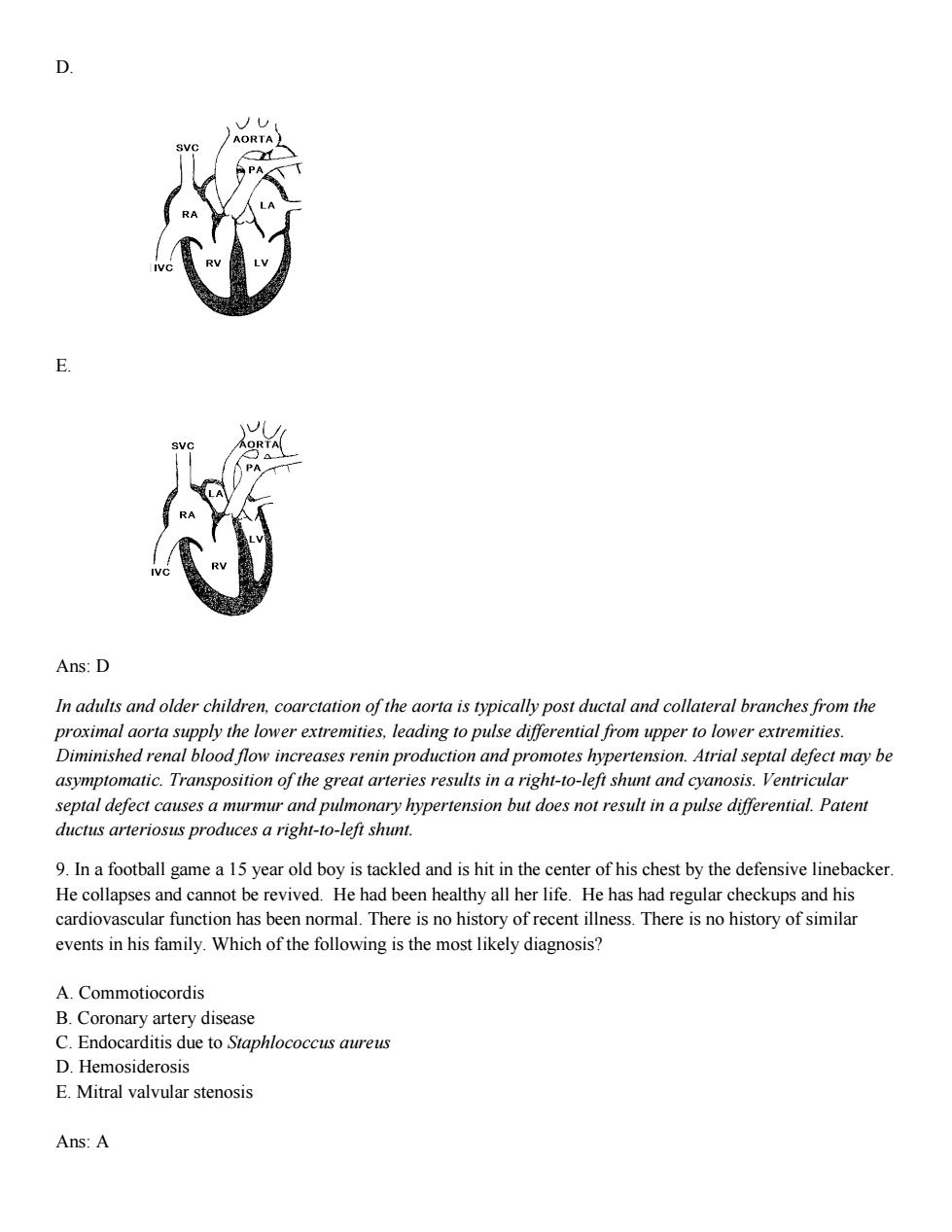正在加载图片...

0 Ans:D In adults and older children.coarctation of the aorta is typically post ductal and collateral branches from the proximal aorta supply the lower extremities,leading to pulse differential from upper to lower extremities. Diminished renal blood flow increases renin production and promotes hypertension.Atrial septal defect may be asymptomatic.Transposition of the great arteries results in a right-to-left shunt and cyanosis.Ventricular septal defect causes a murmur and pulmonary hypertension but does not result in a pulse differential.Patent ductus arteriosus produces a right-to-left shunt. 9.In a football game a 15 year old boy is tackled and is hit in the center of his chest by the defensive linebacker. He collapses and cannot be revived.He had been healthy all her life.He has had regular checkups and his cardiovascular function has been normal.There is no history of recent illness.There is no history of simila events in his family.Which of the following is the most likely diagnosis? A.Commotiocordis B.Coronary artery disease C.Endocarditis due to Staphlococcus aureus D.Hemosiderosis E.Mitral valvular stenosis Ans:A D. E. Ans: D In adults and older children, coarctation of the aorta is typically post ductal and collateral branches from the proximal aorta supply the lower extremities, leading to pulse differential from upper to lower extremities. Diminished renal blood flow increases renin production and promotes hypertension. Atrial septal defect may be asymptomatic. Transposition of the great arteries results in a right-to-left shunt and cyanosis. Ventricular septal defect causes a murmur and pulmonary hypertension but does not result in a pulse differential. Patent ductus arteriosus produces a right-to-left shunt. 9. In a football game a 15 year old boy is tackled and is hit in the center of his chest by the defensive linebacker. He collapses and cannot be revived. He had been healthy all her life. He has had regular checkups and his cardiovascular function has been normal. There is no history of recent illness. There is no history of similar events in his family. Which of the following is the most likely diagnosis? A. Commotiocordis B. Coronary artery disease C. Endocarditis due to Staphlococcus aureus D. Hemosiderosis E. Mitral valvular stenosis Ans: A